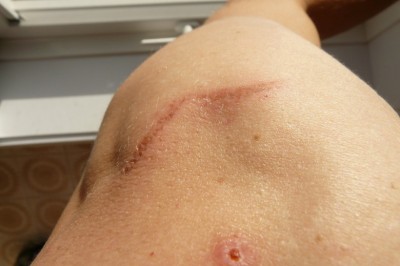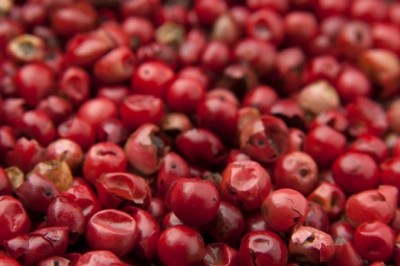All About Hyaluronic Acid
What is hyaluronic acid?
Hyaluronic acid (HA) is a naturally occurring sugar (polysaccharide) in the body and a component of synovial fluid (1) and subcutaneous tissue (2). HA is being explored extensively by the medical community as a treatment for debilitating bone and joint disorders and its potential in rejuvenating skin and preventing wrinkles. As HA occurs naturally and in abundance in the vitreous humor of the eye (in the form of a gel surrounding roughly 80 percent of the eyeball), its been approved by the FDA for use in prescription eye drops and as a lubricant during eye surgery.
Because of its far-reaching potential in impacting the health of skin, bones, joints and eyes, HA has gained the attention of the medical, cosmetic and health food industries.
(1) Lubricant found on the surface of joint cartilage
(2) Fleshy layers beneath the cutis (two outer layers of skin)
How HA works in the body
Hyaluronic acid, also known as hyaluronan, is presumed to be a major component of the extracellular matrix - the space between living cells (and a defining feature of connective tissue). Its said to function as both a coagulant and cementing agent for synovial fluid and as a cushion and lubricant for joints. HA is of high molecular weight and is composed of the carbohydrate and glucuronic acid found in synovial fluid - thickening the fluid and ultimately providing a cushion effect. FDA approved HA products are frequently used to treat persons who suffer from bone and joint disorders common to the back, knees, elbows and shoulders.
Hyaluronic acid is also prevalent in the skin and, along with collagen, is said to be responsible for skins elasticity. Because the degree to which HA occurs naturally in skin diminishes with age, skin can become dried, wrinkled, rigid and weathered (hyaluronan in skin tissue begins to deplete rapidly after age 40 and even more so after 50). As a result, the use of HA in cosmetic injections, body creams, lotions and oral supplements have gained popularity in the anti-aging marketplace.
Aside from its youth-enhancing qualities and its potential benefit to bone, joint and eye health, HA is presumed to play a role in transporting nutrients to cells and excreting metabolic waste from the body. Several factors may impact HA levels including heredity, age, general nutrition and environment.
How hyaluronan works as skin filler
When injected into the skin as a gel, HA binds to water, enhancing volume and filling in larger folds of skin around the cheeks and mouth. HA functions by holding together collagen and elastin, providing a framework for the skin. As dermal filler, HA acts as a moisturizer and volumizer, making skin look full, plump, healthy and young. Studies indicate that "younger-looking skin" is typically high in HA.
Sources of HA
As mentioned previously, hyaluronic acid occurs naturally in the eyes, joints and skin of humans. Literature suggests HA also occurs in certain starchy vegetables and other foods, but to what extent is uncertain and the benefits to human health unsure. For example, animal studies show that, by heightening levels of estrogen in the body, soy isoflavones may increase the bodys production of hyaluronic acid. And because HA is essential to the production of collagen (the protein substance found in skin, tendon, bone, cartilage and other connective tissue), nutritionists suggest that foods beneficial to collagen production, such as those high in vitamin C, may also lead to heightened levels of HA in the body.
The hyaluronan used medicinally and in supplements is both biosynthetically engineered from bacteria such as streptococci (via bacterial fermentation) and extracted from animal sources such as rooster combs and bovine vitreous humor, both of which contain high levels of HA. Research also suggests that the purification of hyaluronan from the vitreous humor of fish shows promise. The method of extraction is said to be highly efficient and more cost effective than derivation from rooster combs and traditional bovine sources of HA.
Hyaluronic acid benefits and claims
As dermatologists have traced age-related skin wrinkles to the loss of collagen, elastin and hyaluronic acid, HA has been dubbed the "fountain of youth" by the media for its numerous applications in cosmetic surgery and for its potential as an anti-aging supplement. HA is said to hold many times more moisture than collagen, helping to bind and retain essential moisture in skin layers and reduce fine lines caused by dehydration.
HA has also been found by the medical community to benefit bone and joint health (when a loss of HA has occurred or is imminent) and has been found propitious as a lubricant during eye surgery and as an active ingredient in eye drops.
When compared to face-lifts, eyelid surgery and other reconstructive procedures, cosmetic injections of hyaluronan are noninvasive. They result in little to no downtime, and without surgery or incision, doctors can erase wrinkles, fine lines and scarring in minutes, as well as skin damage caused by sun. Hyaluronan treatments of this nature are said to be more effective and longer lasting than both prescription and over-the-counter creams, lotions and other topical anti-aging products.
Side effects and safety of HA supplements
Although injections of hyaluronan into skin and joints have been approved by the FDA, oral HA applications are relatively new to the market, so their actual safety and effectiveness is unknown, as are both the short-term and long-term effects of HA supplementation.
Hyaluronic acid clinical studies and research
HA is being studied for its potential in healing varicose veins, eye floaters and retinal detachments, aneurysm, esophageal influx, glaucoma, burns, psoriasis and scoliosis.*
Research suggests that HA may also facilitate nerve repair, heal scarred vocal chords and reduce back pain.* It continues to be studied as a replacement for certain steroidal compounds and its potential in aiding joint inflammation. Studies indicate that hyaluronan may even be advantageous in the fight against gingivitis.*
*Statements not evaluated by FDA
HA efficacy and the FDA
Although HA oral supplements which target bone, joint and skin health are readily available, their efficacy remains unknown, as clinical human trials were virtually non-existent at the time of this writing. Notwithstanding the fact that oral hyaluronic supplementation has yet to be approved by the FDA, the agency has approved the use of hyaluronan in many dermatological skin fillers and its use by orthopedists for knee, shoulder and joint problems related to osteoarthritis. Because HA also occurs naturally in the vitreous humor of the eye, it has been approved by the FDA for use in prescription eye drops and as a lubricant in eye surgery.
• Injectable hyaluronic acid marketed under the brand names Hyalgan® and Orthovisc® are FDA-approved treatments for osteoarthritis of the knee.
• Dermal cosmetic fillers such as Restylane® have also been approved by the FDA.
For more information on Hyaluronic Acid, visit www.VitaCost.com/Supplements/Hyaluronic-Acid.
References
1. Survey Shows Restylane, the Number One Selling Dermal Filler in the U.S., is Also "Top-of-Mind" Among Physicians Surveyed in Canada, Italy, Germany and France; Restylane Identified as Hyaluronic Acid Used Most Often to Correct Nasolabial Fold Wrinkles by Dermatologists and Plastic Surgeons Surveyed. PrimeZone Media Network. Oct 23, 2007 pNA.
2. Hyaluronic Acid by Ray Sahelian, M.D. http://www.raysahelian.com/hyaluronic-acid.html.
3. Skin and Joint Health. Total Health, 02746743, Aug/Sep2007, Vol. 29, Issue 3
4. Hyaluronic Acid. Can it prevent premature aging? 2007 Pine Canyon Media, LLC.
5. FDA-Approved Skin Fillers Changing the Face of Cosmetic Dermatology Quelle: newswise. Weitere Informationen: www.aad.org 2004.
6. Science Meets Beauty: Using Medicine to Improve Appearances. Carlos Rados, FDA Consumer Magazine 2004 http://www.fda.gov/FDAC/features/2004/204_beauty.html
7. Natural Food Sources of Hyaluronic Acid and Collagen. Naweko San-Joyz. E-zine Articles 2007. http://ezinearticles.com/?Natural-Food-Sources-of-Hyaluronic-Acid-and-Collagen&id=92545
8. From the Head of a Rooster to a Smiling Face Near You. New York Times. December 30, 2003




























